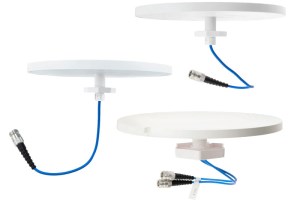Fairview Microwave, an electronics brand and a provider of on-demand RF, microwave and millimetre-wave components, has introduced a series of low-PIM, in-building DAS antennas to address the low-PIM requirements for 5G and LTE/4G bands.
Fairview’s new low-PIM DAS antennas feature both ceiling-mount and wall-mount options with low internal noise for greater data speeds, throughput and quality of connection and the ability for more users to connect to a network.
These low-PIM, in-building DAS antennas achieve greater LTE and 5G all over the world, covering the following bands: 600, 700, 800, 850, 900, 1800, 1900, 2100, 2600, 3500 and 5800. Their low-profile designs are intended to provide seamless indoor installations without creating eyesores or potential disruption with indoor personnel.
Additional features of these low-PIM DAS antennas include better than -150 dBc PIM ratings and N female and 4.3-10 connector options. Additionally, their four-port (4×4) MIMO capabilities ensure increased 5G data speeds up to four times greater than a single antenna.
“Our new offering of low-PIM, in-building DAS antennas effectively allocate our customers’ wireless coverage and capacity inside buildings or other structures. With best-in-class engineering and coverage of the full sub-6 GHz 5G band, these antennas are perfectly suited for the most challenging low-PIM requirements for 5G and LTE/4G band applications,” says Kevin Hietpas, product line manager.
Comment on this article below or via Twitter: @VanillaPlus OR @jcvplus






